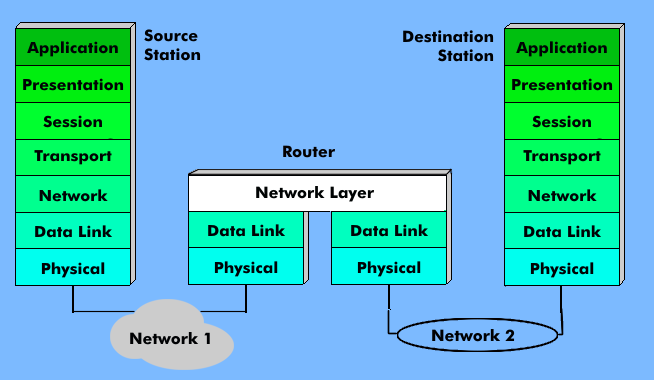routing
Routing is a path selection function for switching messages between LANs, LANs and WANs, and between WANs. Unlike bridging, which is also used for flow control and which takes place at the linklayer, routing takes place at the network layer.
In routing, data packets are transported from one node to the next node using network resources. In contrast to classic routing, in which individual data packets are routed, there is session-based routing in which the route is defined for an entire session and which therefore has shorter latency times. Routing procedures can be roughly classified into:
Centralized and distributed methods, where either a central station has the necessary routing information and makes the routing decision or, in the distributed technique, the individual Interface Message Processors(IMPs) make their own decision
Static methods In static routing, the optimal path choice is computed once and subsequently the same path is always used over the IMPs. This procedure is also referred to as fixed routing( FR). The routing algorithm has a fixed route, and transmission between the terminals always takes place via a fixed, permanent path that is defined in the routing table.
Dynamic methods In dynamic routing, path selection is based on current state parameters of the network. This poses a problem in large networks because the network state is constantly changing.
Local and global methods In these routing methods, the network state in the immediate vicinity and the state of the entire network are taken into account
Deterministic and stochastic methods, in which routing is determined using deterministic and stochastic decision rules, respectively.
Routers connect subnets at the network layer of the OSI reference model. Since layer 3 is different for all industry standards, router coupling is protocol dependent with respect to the higher layers, i.e., a router must understand all protocols it is to handle. Coupling at the network layer allows different layer 2 protocols to be exchanged.
Due to the implemented routing protocols, router coupling provides more complex and possibly more efficient possibilities to exploit redundant network structures with regard to dynamic path selection and alternative routes compared to bridge coupling.


